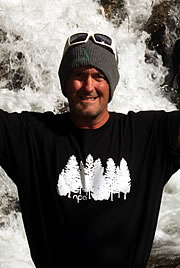Canada. Yours to discover: Top NCC protected areas selected by eh Canada Travel
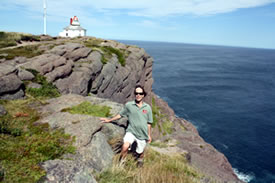
Cape Spear, NL (Photo by eh Canada Travel & Adventure)
As avid explorers of Canada, from coast to coast to coast, we have visited thousands of parks and protected areas in the name of researching tourism. So...when selecting our TOP most memorable adventures in a Nature Conservancy of Canada (NCC) protected area we were lost for words. Not because we couldn't think of any, but because there are so many to select from that have provided us with fond memories and profound thought-provoking experiences.
On our list below we have chosen some of our most memorable protected properties where NCC has had some influence. To qualify for our list NCC must either own and manage the land or has played a role in assisting other conservation groups in protecting these natural areas. NCC, on occasion, also participates on other management and development teams for projects involving protection and conservation of ecosystems. As the project moves forward NCC sometimes hands over the responsibility of the project to other associations and/or government to manage.
Whatever the case, NCC's work has made a profound positive impact on the protection of habitat for species at risk and other plants and wildlife. NCC's work also provides educational and recreational opportunities for us — the human race — to embrace and appreciate.
Here are our TOP NCC protected areas:
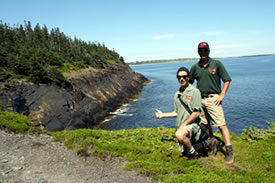
Gaff Point, NS (Photo by eh Canada Travel & Adventure)
(1) Gaff Point, Lunenburg, Nova Scotia
A hiking trail that starts from Hirtle’s Beach. Pretty good sign of good things to come when an adventure starts with walking a long beautiful beach. At the far end of the beach — to your right — is the trailhead to the seven-kilometre-long Gaff Point Trail. The hiking route explores forests, cliffs, rocky shorelines, alvars, hidden coves, estuaries before leading to views of the nearby LaHave Islands. From your perch on the point one can also view seals, whales and sailing boats while surrounded by 20+ Inukshuks. This trail is a real gem! Bring your camera, binoculars and video. It can get windy so you might want to prepare for that as well.

Cape Spear, NL (Photo by eh Canada Travel & Adventure)
(2) Cape Spear, St. John's, Newfoundland
Cape Spear is the easternmost point in Canada and North America. It is home to a National Historic Site of Canada lighthouse and the 11-kilometre East Coast Trail. The trail connects Cape Spear with Maddox Cove. The trail passes through a Nature Conservancy of Canada protected property in Maddox Cove. The hiking and sightseeing route explores rocky terrain, erratics and crosses over two rivers while providing amazing views and marine wildlife sightings. We met very few people on this trail but we encountered boatloads of marine scenery.
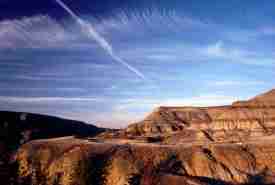
Horseshoe Canyon, Alberta (Photo by Kevin Connelly)
(3) Horseshoe Canyon, Drumheller, Alberta
The province of Alberta provides some very unique geological sightseeing vantage points so travelers can view the ecosystems of the Canadian Badlands. From the top of the Horseshoe Canyon one can see the layers of time formed into the rock dating back to the Cretaceous period, when dinosaurs roamed the land. The canyon is home to Prairie wild grasses and many species of endangered flora and fauna. Today, the canyon is one of the most photographed areas of the badlands attracting many travelers to the region for awe-inspiring scenery.
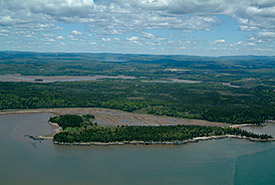
Musquash Estuary, New Brunswick (Photo by Ron Garnett)
(4) Musquash Estuary, Saint John, New Brunswick
Hiking trails, birding and sightseeing in what some consider the most important ecosystem in Atlantic Canada. What many do not know is that Musquash is the last fully functioning estuary in the Bay of Fundy. NCC assists in keeping it functional as they have purchased over 21 properties and protected 4,243 acres (1,717 hectares) of the estuary. They have also created a trail system of mainly sightseeing loop trails. The trails provide views of estuary life, cobble beaches, mud flats, salt marshes and birds. Lots and lots of birding opportunities. Boardwalk trails protect the marsh and lead explorers out into the middle of the marsh.
More on the Musquash Estuary >
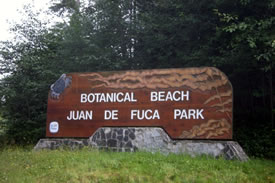
Botanical Beach, BC (Photo by eh Canada Travel & Adventure)
(5) Botanical Beach, Port Renfrew, British Columbia
NCC played a role in protecting the marine life on Botanical Beach, which is part of the 3,780-acre (1,530-hectare) Juan de Fuca Provincial Park. Botanical Beach is the northern trailhead entrance for the Juan de Fuca Trail backpacking adventure. Not into backpacking? Then stick around for low tide and check out the endless tidal pools. It is a classroom for learning. Some of the intertidal life found in the tidal pools include green sea urchins, giant green anemones, chitons, red sea urchins, hermit crabs, Purple Shore Crabs and more.
More on Botanical Beach >
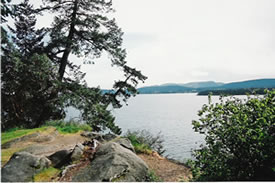
Bodega Ridge, BC (Photo by eh Canada Travel & Adventure)
(6) Bodega Ridge Provincial Park, Galiano Island, Gulf Islands, British Columbia
NCC played a role in creating this park, which is now under provincial management. Bodega Ridge is 576 acres (233 hectares). The park protects the flora, fauna, marine and birding wildlife living and growing in the region. Bodega is best known for its four-kilometre hiking trail and birdwatching opportunities following along a mountain ridge overlooking Trincomali Channel, Wallace Island Marine Park and Saltspring Island. We were in awe of the soaring birds and cliff side views.
More on Bodega Ridge >
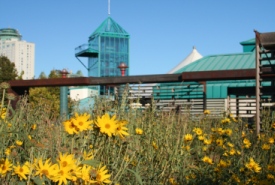
The Forks Prairie Garden, Manitoba (Photo by NCC)
(7) The Forks Prairie Garden, Winnipeg, Manitoba
The Forks is one of the most visited attractions in the province of Manitoba. It is located within the City of Winnipeg near the junction of the Assiniboine and Red Rivers. There are kilometres of sightseeing walking trails leading to monuments, vendors, tours, shopping and NCC's Forks Prairie Garden. The garden is home to more than 75 native prairie species, including tall grass prairie, purple prairie clover, bergamot, western red lily, crocus, wild iris and some Indian breadroot. The garden is one of the few places left where travelers can easily view the native plants of the Prairies.

